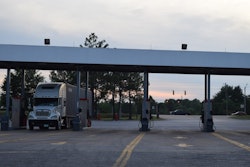All compliant electronic logging devices will share a common bond: They can record data coming in from the system that controls the truck’s engine and component parts. The final rule from the Federal Motor Carrier Safety Administration was specific in requiring synchronization with the electronic control module. That’s one of the reasons the agency didn’t require ELDs in trucks with model-year 1999 or older engines.
The rule requires ELDs to automatically record date, time, location information, engine hours, vehicle miles and identification information for the driver, carrier and vehicle itself. Unless the driver is enabled for use of the vehicle in a “personal conveyance” mode outside of work hours, ELDs are required to record all of those elements “when the driver indicates a change of duty status or a change to a special driving category” such as a yard move, the rule states.
When in motion, ELDs are required to record all of the information on an hourly basis at a minimum. Many ELDs are offered as part of systems built for detailed tracking purposes, useful to fleets and owner-operators for purposes such as automatic notification of arrival times.
Those systems are capable of recording in a much more refined manner, and some may default to that. Providers may or may not have the ability to adjust the refinement.
Though there are plenty of variations, two types of ELDs have emerged:
In dedicated unit configurations, the device is supplied by the provider and is likely to remain in the truck.
BYOD (“bring your own device”) systems allow buyers to purchase their own hardware for the driver interface, such as an owner-operator using an app on a personal Android- or iOS-powered smartphone. A carrier may seek out a deal on tablets to dedicate to its power units and drivers.










